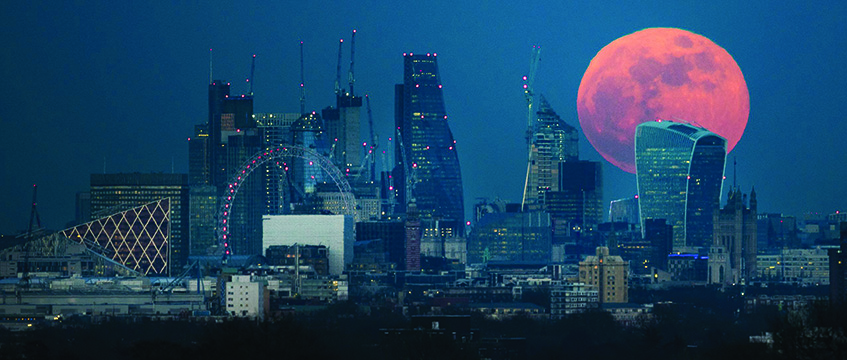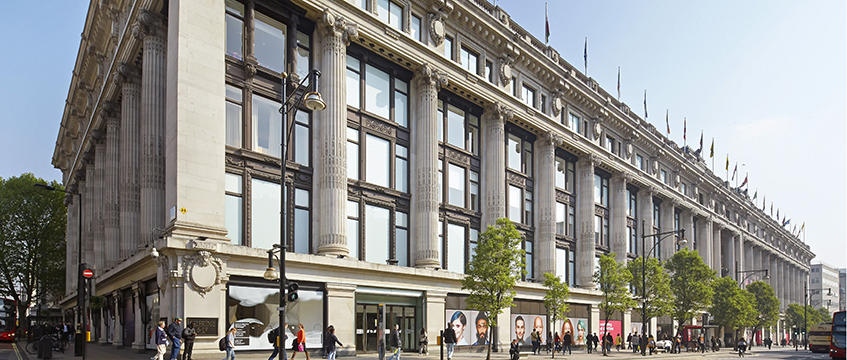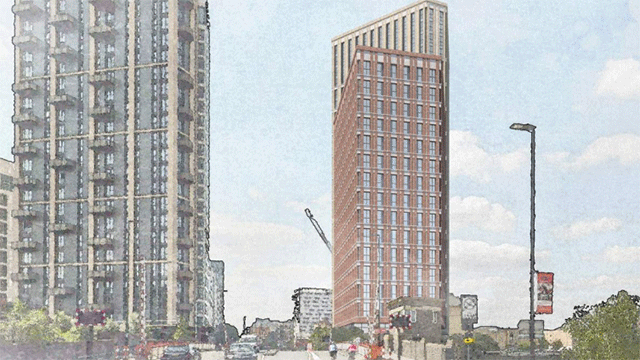“One of the biggest challenges in the Square Mile is space,” states the City Corporation’s Carolyn Dwyer.
Speaking as part of the Future of London series, the City of London’s director of the built environment is under no illusions that the capital needs to up its game in terms of infrastructure.
There are numerous demands. Climate change is a huge factor, whether hitting targets to achieve net-zero emissions or improving climate resilience. As is the current pandemic, and what that might mean for working patterns. And, of course, there are the two most problematic nuts to crack – transport and digital.
London is a renowned and well-connected global city. But it is slowly falling down the league tables. Other younger, less hemmed-in cities are finding it easier to plug new transport or digital infrastructure in to their grids, while the mediaeval street plan of central London makes any improvement a painstakingly slow and laborious process.
The lack of space is at the heart of that. “If you peel the surface off our roads, there is this crazy spaghetti underneath of all the infrastructure that’s been laid in the roads over the last hundred years,” says Dwyer. “It’s really hard to find space for new facilities and infrastructure.”
The same applies to transport. “How do we make the best use of the space that we’ve got?” she muses.
But there are other hurdles. The City has about five kilometres of tunnels running underneath its streets. Each is large enough for an adult to walk down, and each has the capacity to hold a lot more cabling, piping and future-proofing for the growing city. But they aren’t connected. And they can’t be extended. Why? The finance model is sound. The private sector partners are ready to go.
Savills’ head of economics, Rory Brooke, joined for the panel discussion. He has previously worked on the opportunities the subterranean tunnels provide. The reason nothing has happened is because “there’s a need for at least secondary legislation, if not more”.
Similarly, every time the City approves a new skyscraper or large building, the electricity supply needs to be upgraded to that plot – from 11kV to 33kV. Obviously the City knows well in advance where the intensification areas are and where new development will take place, so surely this can be done well in advance? Nope. Again, allowing the providers to invest ahead of time would require legislation.
“There’s lots more needed to be done. And it needs institutional will from central government and local government,” says Brooke. “It needs strong leadership and determination to get things done.”
A more holistic approach is needed. Rokhsana Fiaz, mayor of Newham, also took the time to join the debate. The key is to ensure that everyone benefits. “A significant amount of investment is needed, but it must be available to all Newham residents,” she says. “We are building from the outset the digital infrastructure that we need so we don’t get that digital divide.”
Areas such as the Royal Docks Enterprise Zone will be used to pull the entire neighbourhood up. The days when Canary Wharf sat next to near-slums are long gone.
Newham is not only where much of the capital’s intensification and growth will be focused – it is also likely to suffer most from climate change. Centre for London director Ben Rogers, who joined for the debate, says: “Of all regions in the UK, London is particularly vulnerable to extreme heat and increased rain. And the neighbourhoods that are most vulnerable are in the East End, which are already the poorest neighbourhoods.”
While improved infrastructure is still vitally necessary, what infrastructure will be most needed is a key point. Working from home may change transport needs, but it won’t eliminate them.
“People will still need to have offices and workplaces,” states Fiaz, bluntly. “This idea that everyone can easily work from home needs to be challenged. Many of our residents live in neighbourhoods of high density – they don’t have a spare room that they can convert to an office.”
For Rogers, the issue of infrastructure is more existential. “There was a consensus building behind the investment and a long-term infrastructure plan for London. Boris was making that case when he was mayor.”
But that consensus has collapsed. “Since Brexit and since the levelling-up agenda, that looks increasingly vulnerable. The city is moving down league tables and the capital is at a critical junction.”
WilkinsonEyre director Giles Martin agrees. “We can’t just rest on our laurels.”
The energy challenges posed by climate change mean that a huge investment needs to be made in EV charging points and photovoltaics, all of which will require major cooperation from the real estate sector and government.
And, of course, “Covid-19 has brought that all into sharp focus,” says Fiaz.
But, in the end, it all comes down to space. “We can’t create new space,” says Martin, whose firm, WilkinsonEyre, does a nice line in opening up opportunities in the spaces above existing infrastructure. “We need to have a multi-level city that people are using at all levels. We only have the one city.
“We just have to be cleverer with the space we’ve got.”













